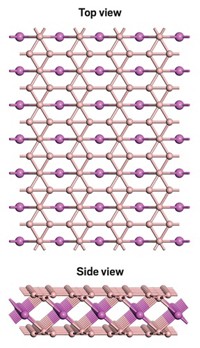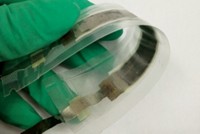Advertisement
Grab your lab coat. Let's get started
Welcome!
Welcome!
Create an account below to get 6 C&EN articles per month, receive newsletters and more - all free.
It seems this is your first time logging in online. Please enter the following information to continue.
As an ACS member you automatically get access to this site. All we need is few more details to create your reading experience.
Not you? Sign in with a different account.
Not you? Sign in with a different account.
ERROR 1
ERROR 1
ERROR 2
ERROR 2
ERROR 2
ERROR 2
ERROR 2
Password and Confirm password must match.
If you have an ACS member number, please enter it here so we can link this account to your membership. (optional)
ERROR 2
ACS values your privacy. By submitting your information, you are gaining access to C&EN and subscribing to our weekly newsletter. We use the information you provide to make your reading experience better, and we will never sell your data to third party members.
Environment
Emitting Light With Nanotubes
Liquid electrolytes boost nanotube transistor's performance
by Aaron A. Rowe
August 10, 2009
| A version of this story appeared in
Volume 87, Issue 32

Nanomaterials that emit light will someday be key components of photonic and optical devices. But first, chemists must develop transistors that can produce photons efficiently at low voltages without much hysteresis (lag in response of current to voltage changes). By linking arrays of aligned carbon nanotubes with liquid electrolytes, Jana Zaumseil of Argonne National Laboratory, John A. Rogers of the University of Illinois, Urbana-Champaign, and colleagues have constructed field-effect transistors that come closer to fitting the bill (ACS Nano, DOI: 10.1021/nn9005736). They find that current-switching gates made of ionic liquids or lithium perchlorate in polyethylene glycol work far better than conventional solid oxide gate materials. The new devices operate at remarkably low voltages (–0.4 to –3 V) without much hysteresis, but they are not yet particularly efficient in converting current to light.





Join the conversation
Contact the reporter
Submit a Letter to the Editor for publication
Engage with us on Twitter